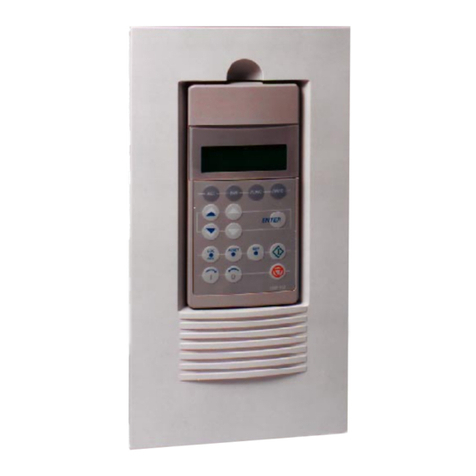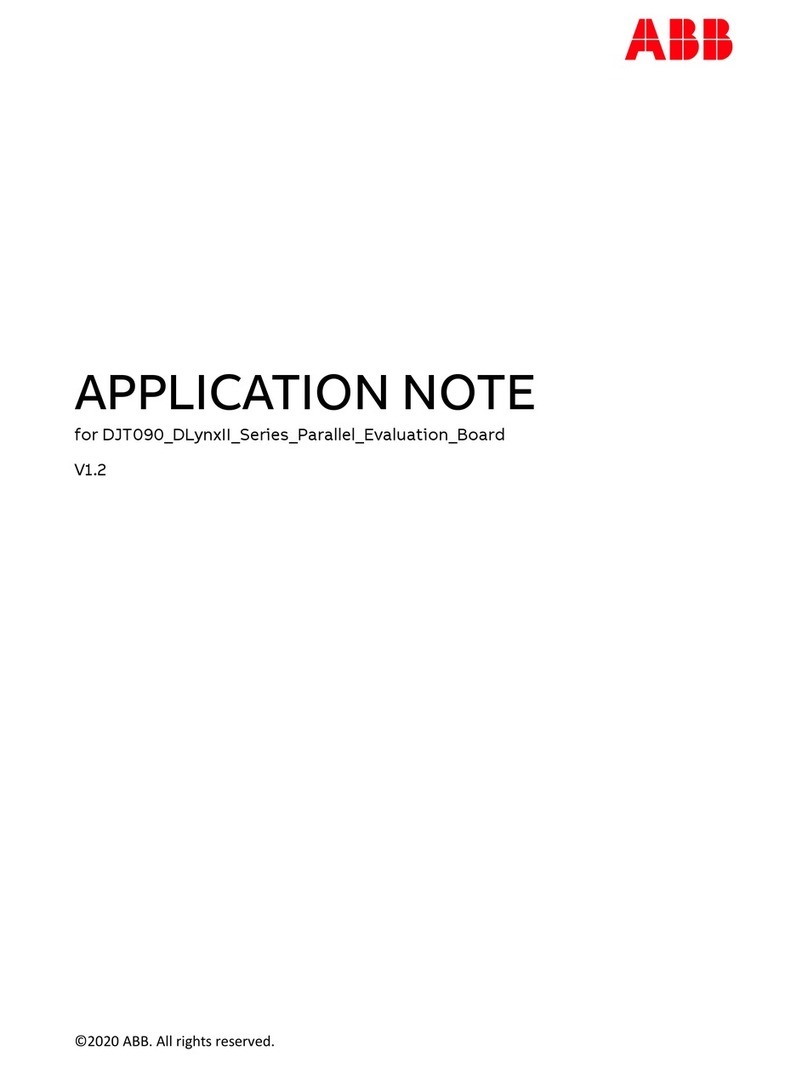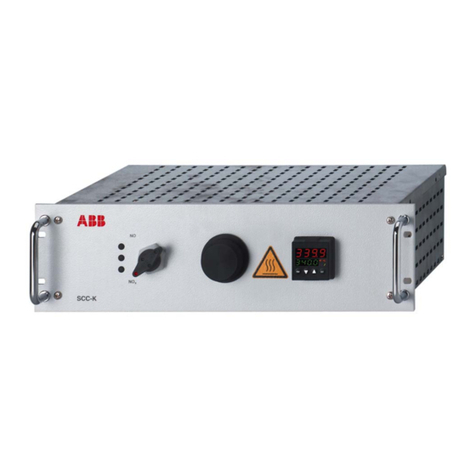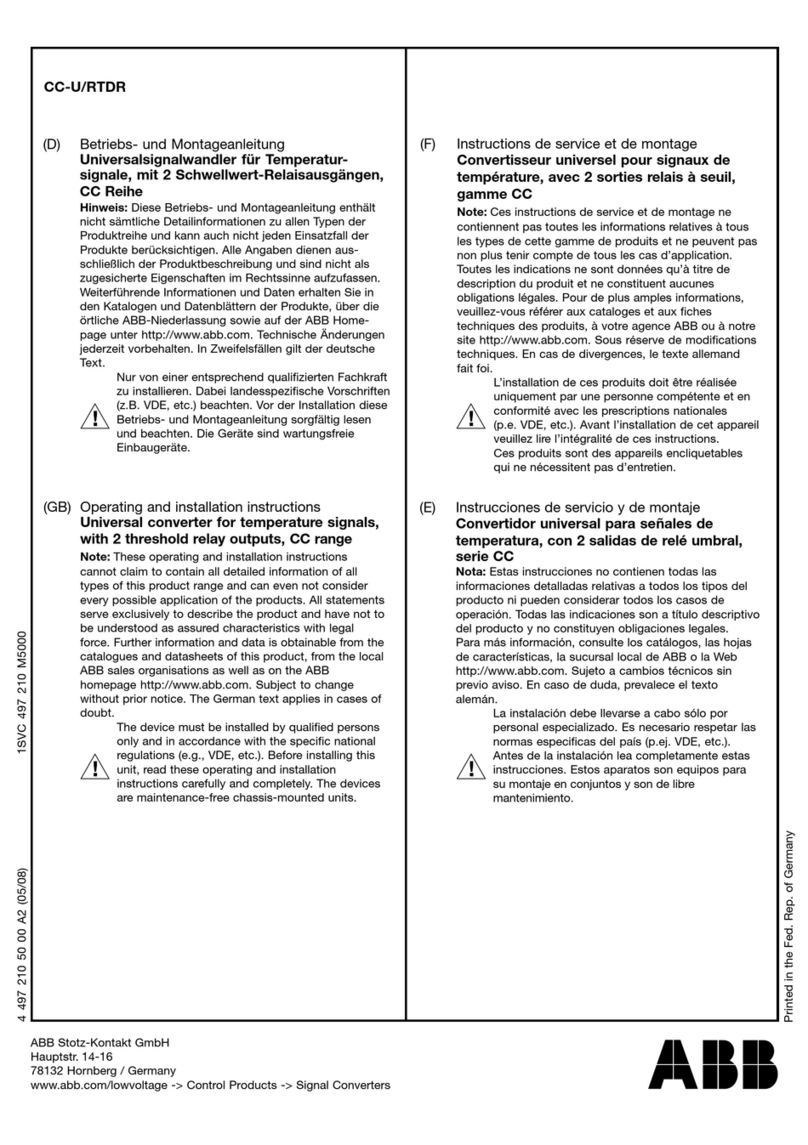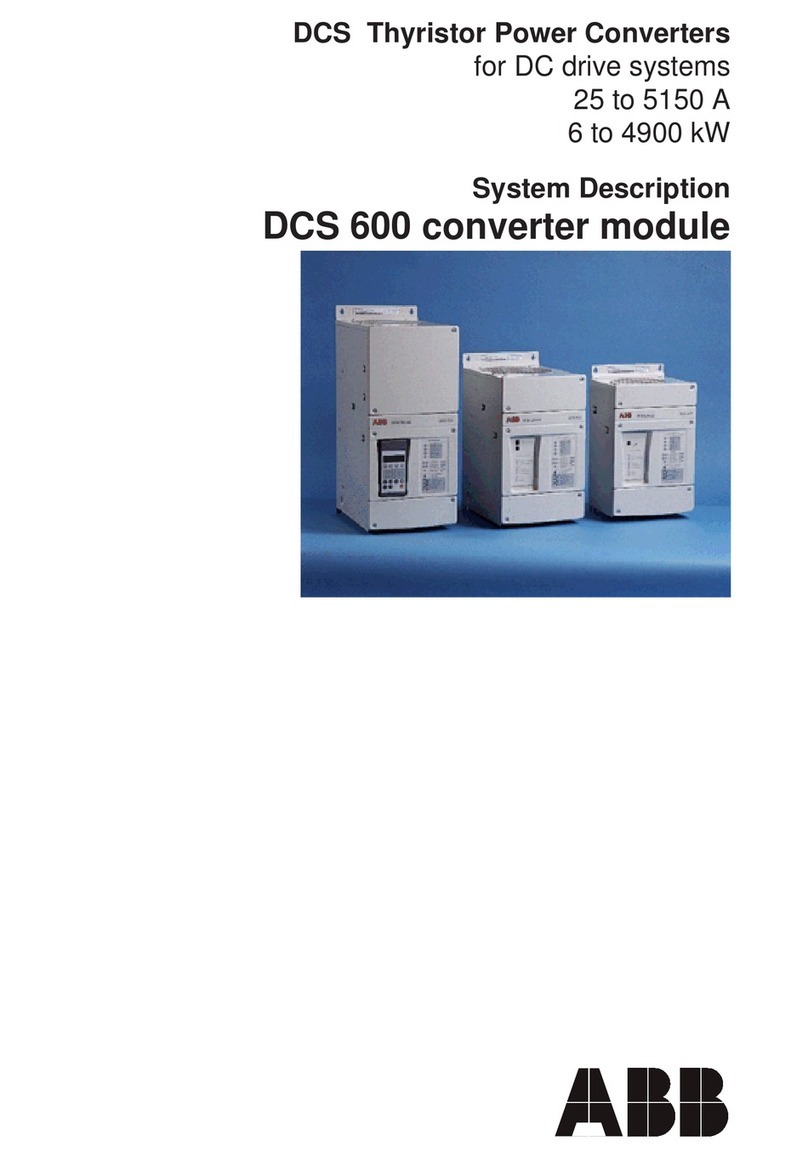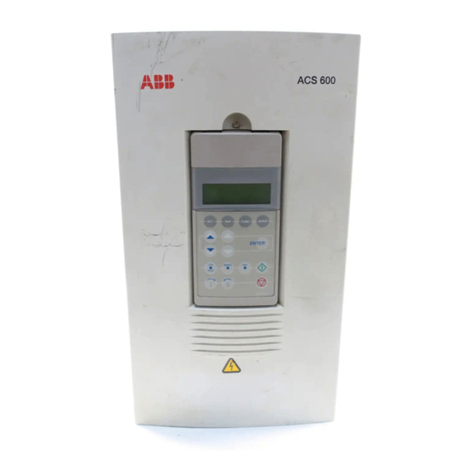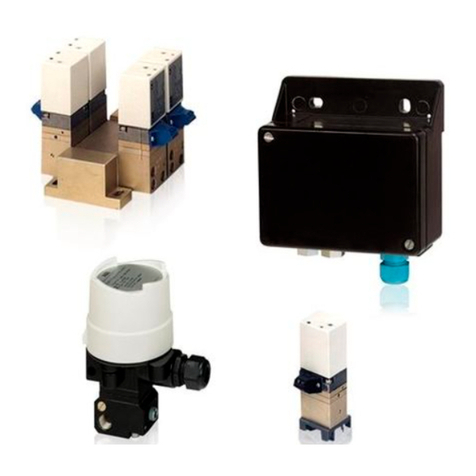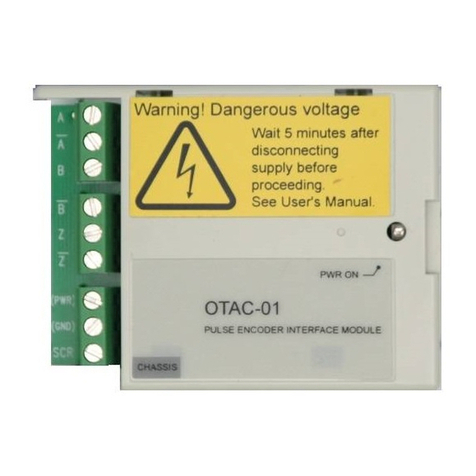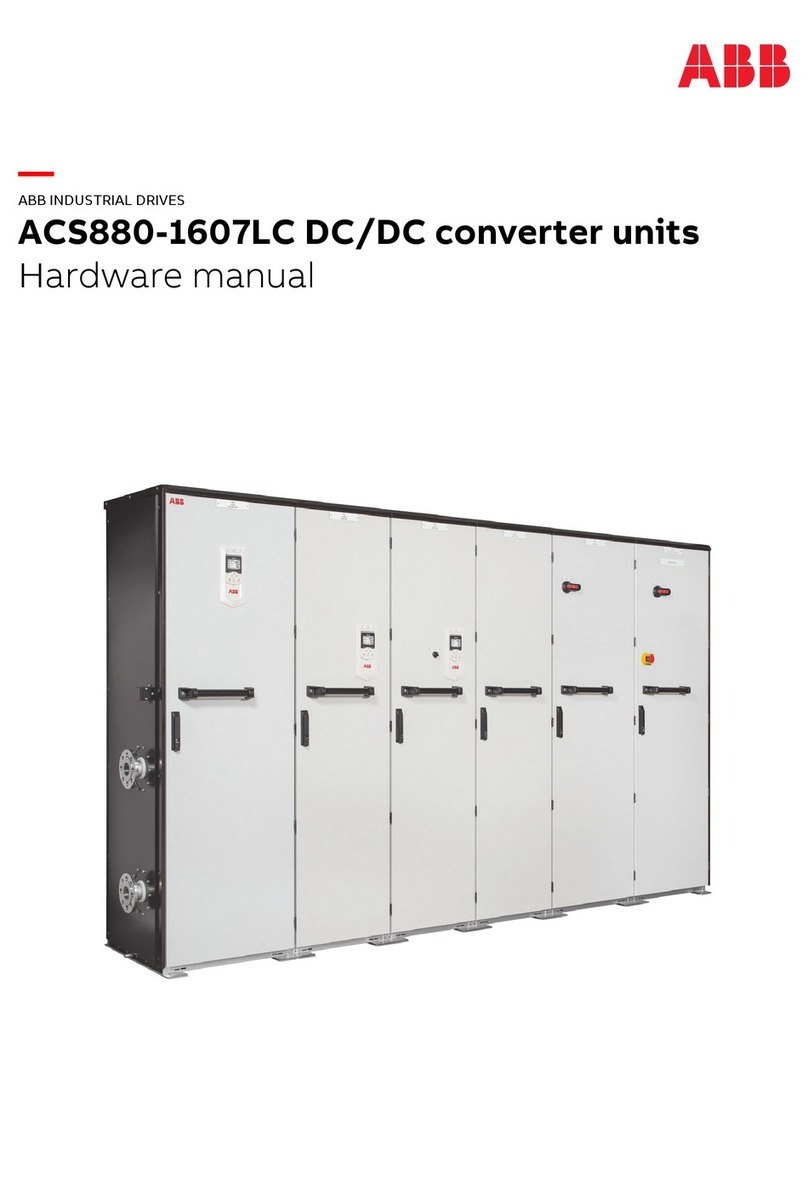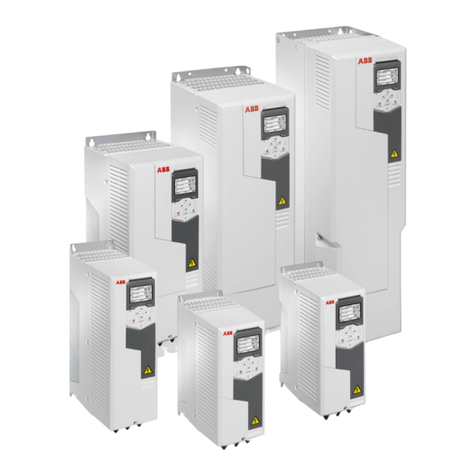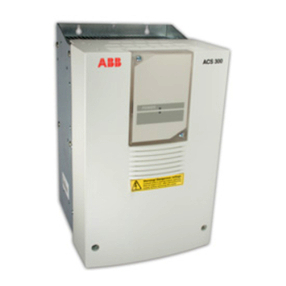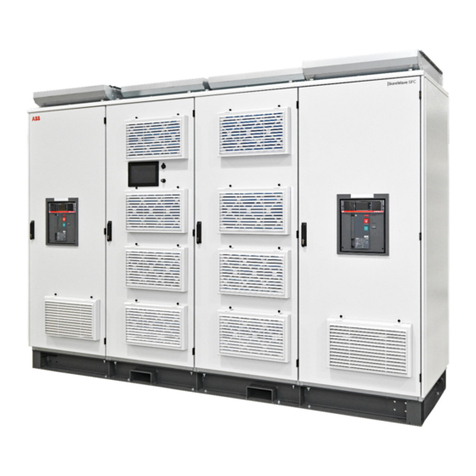
Safety instructions
WARNING! Obey these instructions. If you ignore them, injury or death,
or damage to the equipment can occur. If you are not a qualified
electrical professional, do not do electrical installation or maintenance
work.
• Do not do work on the drive, motor cable, motor, or control cables when the
drive is connected to the input power. Before you start the work, isolate the
drive from all dangerous voltage sources and make sure that it is safe to
start the work. Always wait for 5 minutes after disconnecting the input
power to let the intermediate circuit capacitors discharge.
• Do not do work on the drive when a rotating permanent magnet motor is
connected to it. A rotating permanent magnet motor energizes the drive,
including its input and output terminals.
1. Unpack the delivery
Keep the drive in its package until you are ready to install it. After unpacking,
protect the drive from dust, debris and moisture. Make sure that these items are
included:
• clamping plates, clamps and screws
• mounting template, integrated into the package
• quick installation and start-up guide.
Make sure that there are no signs of damage to the items.
2. Reform the capacitors
If the drive has not been powered up for a year or more, you must reform the DC
link capacitors. The manufacturing date is on the type designation label. Refer
to
Guide for capacitor reforming
(3AFE68735190 [English]).
3. Select the cables and fuses
• Select the power cables. Obey the local regulations.
•Input power cable: ABB recommends to use symmetrical shielded cable
(VFD cable) for the best EMC performance.
•Motor cable: Use symmetrical shielded cable (VFD cable) for the best
EMC performance. Symmetrical shielded cable also reduces bearing
currents, wear, and stress on motor insulation.
•Power cable types: In IEC installations, use copper or aluminum cables (if
permitted). In UL installations, use only copper cables.
•Current rating: max. load current.
•Voltage rating: min. 600 V AC.
•Temperature rating: In IEC installations, select a cable rated for at least
70°C (158°F) maximum permissible temperature of conductor in
continuous use. In UL installations, select a cable rated for at least 75°C
(167°F).
•Size: Refer to
Fuses and typical power cable sizes
for the typical cable
sizes and to
Terminal data for the power cables
for the maximum cable
sizes.
• Select the control cables. Use double-shielded twisted-pair cable for analog
signals. Use double-shielded or single-shielded cable for the digital, relay and
I/O signals. Do not run 24 V and 115/230 V signals in the same cable.
• Protect the drive and input power cable with the correct fuses. Refer to
Fuses and typical power cable sizes
.
4. Examine the installation site
The drive is intended for cabinet installation and has a degree of protection of
IP20 / UL open type as standard.
Examine the site where you will install the drive. Make sure that:
• The installation site is sufficiently ventilated and hot air does not recirculate.
• There is sufficient free space around the drive for cooling, maintenance, and
operation. For the minimum free space requirements, refer to
Free space
requirements
.
• The ambient conditions meet the requirements. Refer to
Ambient
conditions
.
• The installation surface is as close to vertical as possible and strong enough
to support the weight of the drive. Refer to
Dimensions and weights
.
• The installation surface, floor and materials near the drive are not flammable.
• There are no sources of strong magnetic fields, such as high-current single-
core conductors or contactor coils near the drive. A strong magnetic field
can cause interference or inaccuracy in the operation of the drive.
5. Install the drive
You can install the drive with screws, or to a DIN rail (top hat type, width × height
= 35 mm × 7.5 mm [1.4 in × 0.3 in]).
Do not install the drive upside down. Make sure that the cooling air exhaust is
above the cooling air inlet.
To install the drive with screws
1. Cut out the mounting
template from the
package and use it to
mark the locations for
the mounting holes.
2. Make the holes for the
mounting screws and
install suitable plugs or
anchors.
—
ABB MICRO DRIVES
ACS150 drives
Quick installation and start-up guide
3. Install the mounting
screws. Leave a gap
between the screw
head and mounting
surface.
4. Place the drive onto the
mounting screws.
5. Tighten the mounting
screws.
To install the drive to a DIN rail
1. Put the top of the drive
onto the DIN
installation rail at an
angle as shown in the
figure.
2. Put the drive against
the wall.
3. Make sure that the drive
is correctly installed.
4. To remove the drive,
press the release lever on top of the drive.
6. Attach the clamping plates
1. Attach the clamping
plate to the plate at the
bottom of the drive
with the provided
screws.
2. Attach the I/O clamping
plate to the clamping
plate with the provided
screws.
7. Measure the insulation resistance
Measuring the insulation is typically not required in North America.
Drive: Do not do voltage tolerance or insulation resistance tests on the drive,
because this can cause damage to the drive.
Input power cable: Measure the insulation of the input power cable before you
connect it to the drive. Obey the local regulations.
Motor and motor cable:
1. Make sure that the motor cable is connected to the motor and disconnected
from the drive output terminals U2, V2 and W2.
2. Use a voltage of 1000 V DC to measure the
insulation resistance between each phase
conductor and the protective earth conductor.
The insulation resistance of an ABB motor must
be more than 100 Mohm (at 25 °C/77 °F). For the
insulation resistance of other motors, refer to
the manufacturer’s documentation. Moisture in
the motor decreases the insulation resistance.
If you think that there is moisture in the motor,
dry the motor and do the measurement again.
8. Make sure that the drive is compatible with the
grounding system
You can connect all drive types to a symmetrically grounded TN-S system
(center-grounded wye).
Before you connect the drive to a corner-grounded delta system or IT system
(ungrounded or high-resistance grounded), remove the metal EMC filter
grounding screw. If the drive has a plastic EMC screw (drives with type code
ACS150-03U-…), it is not necessary to remove the screw.
9. Connect the power cables
Connection diagram (shielded cables)
1. Two protective earth (ground) conductors. Drive safety standard IEC/EN/
UL 61800-5-1 requires two PE conductors, if the cross-sectional area of the
PE conductor is less than 10 mm2Cu or 16 mm2Al. For example, you can use
the cable shield in addition to the fourth conductor.
2. Use a separate grounding cable or a cable with a separate PE conductor for
the line side, if the conductivity of the fourth conductor or shield does not
meet the requirements for the PE conductor.
3. Use a separate grounding cable for the motor side, if the conductivity of the
shield is not sufficient, or if there is no symmetrically constructed PE
conductor in the cable.
4. 360-degree grounding of the cable shield is required for the motor cable and
brake resistor cable (if used). It is also recommended for the input power
cable.
5. 1-phase drives: Connect phase to U1 and neutral to V1. Keep W1
disconnected.
Connection procedure (shielded cables)
For the tightening torques, refer to
Terminal data for the power cables
.
1. Strip the input power
cable. Ground the
cable shield (if any)
under the grounding
clamp. Twist the cable
shield into a bundle,
mark it accordingly
and connect it to the
grounding terminal.
Connect other
grounding
conductors (PE) to
the grounding terminal. Connect the phase conductors to the U1, V1 and W1
terminals.
2. Strip the motor cable. Ground the cable shield
under the grounding clamp. Twist the motor
cable shield into a bundle, mark it accordingly
and connect it to the grounding terminal.
Connect the phase conductors to the U2, V2 and
W2 terminals.
3. If used, connect the brake resistor cable to the
BRK+ and BRK- terminals. Use a shielded cable
and ground the shield under the grounding
clamp.
4. Mechanically attach the cables on the outside of
the drive.
PE
PE
U1 V1 W1 BRK+ BRK-
U1 W1
M
3
U2 V2 W2
V1
(L) (N)
L1 L2 L3
ACS150
Optional brake
resistor
1
23
4 4
5
10. Connect the control cables
Do the connections according to the default control connections of the
application macro that you select.
Default I/O connections (ABB standard macro)
The diagram shows the I/O connections when parameter
9902
is set to 1
(ABB STANDARD).
Connection procedure
To prevent inductive coupling, keep the signal wire pairs twisted all the way up
to the terminals.
1. Strip the outer insulation of the
cable and ground the bare shield
360 degrees under the clamp.
2. Connect the conductors to the
correct control terminals.
3. For double-shielded cables, twist
also the grounding conductors of
each pair in the cable together and
connect the bundle to terminal SCR
(1).
4. Mechanically attach the control
cables on the outside of the drive.
11. Start up the drive
WARNING! Make sure that it is safe to start the motor. Disconnect the
motor from other machinery, if there is a risk of damage or injury.
Before you start up the drive, make sure that the installation is completed and
that you have the motor nameplate data available.
Power-up
Apply input power. The panel powers up into the
Output mode.
Entry of start-up data
Select the application macro (parameter
9902
)
according to how the control cables are
connected. The default value 1 (ABB STANDARD)
is suitable in most cases.
The general parameter setting procedure in the Short parameter mode is described
below.
1. To go to the Main menu, press if the
bottom line shows OUTPUT. Otherwise press
repeatedly until you see MENU at the
bottom.
2.Press keys /until you see
“PAr S” on the display.
3.Press . The display shows a parameter
of the Short parameter mode.
4.Find the appropriate parameter with keys
/.
5.Press and hold for approximately two
seconds until the parameter value is shown
with under the value.
6.Change the value with keys /
. The value changes faster while you
keep the key pressed down.
7. Save the parameter value by pressing .
Enter the motor data from the motor nameplate.
• motor nominal voltage (
9905
)
• motor nominal current (
9906
)
• motor nominal frequency (
9907
).
Set the maximum value for external reference
REF1 (
1105
).
Set constant speeds 1, 2 and 3 (
1202, 1203, 1204)
.
Set the minimum value (%) corresponding to the
minimum signal for AI(1) (
1301
). Typical settings:
0% for 0 … 20 mA (or 0 … 10 V) signal.
20% for 4 … 20 mA (or 2 … 10 V) signal.
Set the maximum limit for the drive output
frequency (
2008
). This is equal to power line
frequency, typically (50 or 60 Hz).
I/O connection 4)
SCR Signal cable shield (screen)
AI Frequency reference: 0 … 20mA
GND Analog input circuit common
+10V Reference voltage: +10V DC, max. 10mA
+24V Auxiliary voltage output: +24V DC, max. 200mA
GND Auxiliary voltage output common
COM Digital input common
DI1 Stop (0) / Start (1)
DI2 Forward (0) / Reverse (1)
DI3 Constant speed selection 1)
DI4 Constant speed selection 1)
DI5 Acceleration and deceleration selection 2)
Relay connection 5)
COM Relay output
No fault [Fault (-1)]
NC
NO
Alternative connection for AI(1):
SCR If you use a voltage signal instead of current, switch the IU
selector to U (0 … 10 V voltage signal), and use this
connection instead the one shown above.
AI
GND
+10V
1) See parameter group 12 CONSTANT
SPEEDS:
2) 0 = ramp times according to parameters
2202
and
2203
. 1 = ramp times according to
parameters
2205
and
2206
.
3) 360 degree grounding under a clamp.
4) Tightening torque: 0.22 N·m (2 lbf·in)
5) Tightening torque: 0.5 N·m (4.4 lbf·in)
DI3 DI4 Operation (parameter)
0 0 Set speed through
integrated potentiometer
10Speed1(
1202
)
01Speed2(
1203
)
11Speed3(
1204
)
3)
1…10kohm


